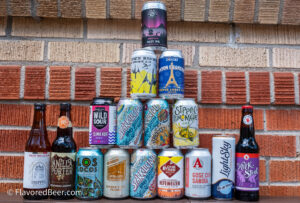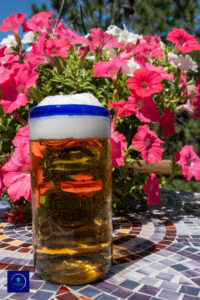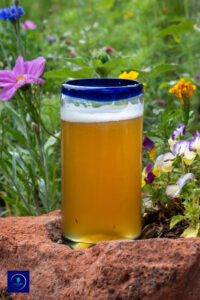Food Time
Cooking with Beer 101
Lets hit the kitchen!
Beer and Food
Cook with beer? Totally! Beer can be used for many different cooking recipes to really bring out some amazing flavors. Light beers can be used for lighter dishes, darker beers can really shine with heavier meals like soups or even desserts! If you want to know what types of beer pairs well with food to drink with a meal rather than cook into it, check out our article here: *******
What About Wine?
There are many dishes that suggest using wine to cook with. Often this can be replaced with the right beer and have a heartier, more grounded flavor to it. What type of beer should I use for what though? What are some golden rules of knowledge that can be applied across the board? These are important questions we help you with!

How Buzzed Can I Get?
Pretty much none. For starters, most of the alcohol itself will be cooked off while cooking. Many dishes we share the beer will need to be reduced so there’s the concentrated beer flavor without the liquid. While reducing, the alcohol burns off. Also consider portions. This isn’t marijuana – we’re usually cooking 8-12 oz of beer for an entire loaf of bread, or dips and sauces for multiple people.
If you won't drink it, don't cook it
When deciding to cook with beer it is important to remember the most important rule: always cook with something you would drink. If it doesn’t taste great on your tongue, chances are you won’t enjoy the dish you spend effort and time creating either, and then think the recipe was bad or cooking with beer isn’t fun – and it really is!
Better Beers Equal Better Dishes
Simply put, cheap beer will do a trick, but you’re not going to be pulling rabbits out of hats in the kitchen with it. Local brewers are your friend. Not to bash cheap beer – it has its purpose, but it’s not in cooking. There are reasons it’s less expensive, and the ingredients just usually are not up to par. What’s really in that beer? That’s a topic for another time. Check out your local liquor store for some local brews and try something new.
What does cooking with beer do?
It really depends on what you’re cooking and what your use case is. For example, when we made our jalapeno poppers with bacon beer and cream cheese, we needed beer flavor so we reduced it down to a small amount. When we made our honey beer bread, the yeast and carbonation in the beer replaced the yeast usually needed, and thus using the entire beer helped create our dough and the bread to rise in the oven.
Whether it’s a cake or beer-battered fried fish & chips, using beer adds a delightful fluffy and tender texture when cooking and even a nice extra crispiness when used in frying.
Adding beer to meat will not only help flavor the meat, but tenderize it as well due to the enzymes in the beer (which is why it’s so great as a marinade).
Light or Dark Beer? Ale or Lager?
It really depends on what you’re making in the kitchen. We will go over what is most commonly used in the kitchen, and stocked in the fridge.
Fun fact, ales are the original type of beer and lagers are from our more modernized days of brewing beer. Lagers tend to be more dry and light and because of this they are usually NOT the go to choice for cooking – although we do sometimes use them in our own kitchen. Ales are great with the extra punch of flavor they usually offer, and most of what we go over is a form of an ale.

Pilsner Beers
If you want something to have a delicious beer flavor without extra weight, try a pilsner. Usually more filtered, crisp and clear, this a perfect lighter dish choice. These can come in a plethora of flavors to experiment with and they add a nice crispness. While not the most suitable choice for desserts, using them for salad dressings, appetizers and other flavorful dishes needing a zing and zang, is what pilsners really shine at!

Wheat Beers
Wheat beers are usually unfiltered which really helps add flavor to a recipe. They tend to be brewed with accents of fruit flavors and can vary from a more mellow fresh flavor to one with more of a tangy, even fiery flavor. On the one hand using them for lighter dishes like a salad dressing or a fish marinade would be lovely – on the spicier side, this could be used to really bring out the taste of a red meat on the grill like that steak you’ve been wanting to grab at the store! Other common names for wheat beers you’ll see when looking are Weizen, White, Berliner Weisee, Belgian witbier, and the well known hefeweizen.

Pale Ales
It is important to note that pale ales are a little different from India Pale Ales (IPAs). IPAs were originally brewed with extra hops to not spoil during the long journeys from England to India during the 18th century. While they have become a staple of the beer world, they usually are not best for cooking due to the extra bitterness.
Pale ales traditionally are less hoppy and bitter, and can be great for your favorite campfire meals when wanting a little extra flavor or moisture. Rather than hot dogs on a stick, try brats in a pot over the fire soaked in a nice pale ale. Need a little more broth to your chili or stew? Try a pale ale instead! Fatty dishes, especially fishy ones like salmon, black cod and tuna, work amazingly well when cooking with pale ale. Adding just a spoonful of honey can really mellow the bitter and bring out the beer’s flavor as well.

Porters and Stouts
There are some solid similarities to these types of beer, but there are some key differences worth noting. Both are dark in color, heavier on the tummy and palette, and tend to have coffee/chocolate like flavors.
Porters can be looked at like a blend of a stout and pale ale – still a little bitter, yet smooth and rich at the same time. If your goal is to have a great beer flavor but still hold back a little bit with the coffee and chocolate flavor, go with a porter. Porters are a wonderful choice for red meats without overpowering the meal with too much heavy flavor.
Stouts really let you know they’re in the dish. While heavier than everything mentioned above, they are the go to choice for enriching desserts that will melt in your mouth. Stouts can be used for a wide range of dishes, from BBQ sauces and dips to saucy shellfish dishes and chocolate cakes.

Make Sure to Have Fun
Whatever you try and however you try it, have fun! The same recipe can drastically change in flavor with what beers you try. One of my favorites is honey beer bread. This can be made with cheeses or chocolates, herbs or spices. Each time I make it with different ingredients, I also try a beer that might accent those ingredients.
Let us know what you experiment and have fun with in the kitchen!
